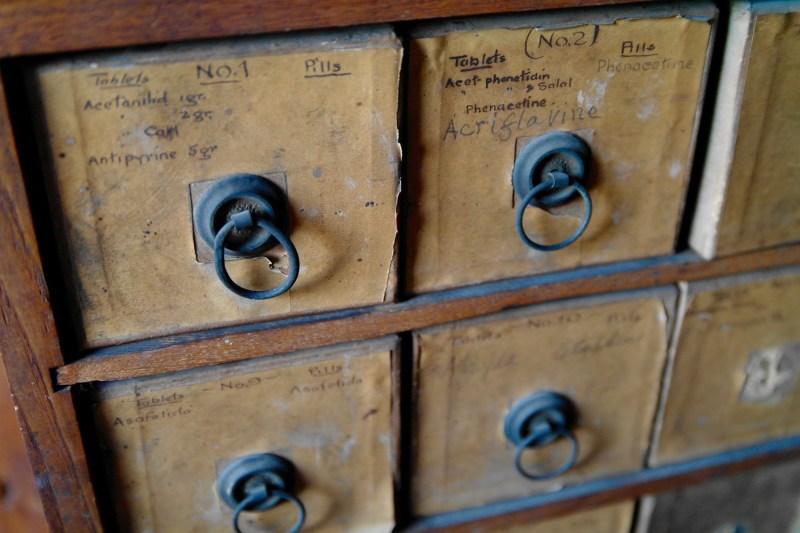There is nothing quite like antiquing. Without a doubt, it’s the closest most of us will ever get to actual treasure hunting. It involves patience and precision, the ability to take in a room and hone in on a single item amidst a mess of ephemera.

I’ve loved antiquing since I was a little boy when I’d go on trips with my grandma. She was a glassware enthusiast, particularly fond of two patterns: Iris and Festival. The former featured a refined, tasteful design of wild irises on crystal while the latter burst forth with garish green and purple vines. I adored both and gleefully celebrated each time we discovered a new piece to add to her collection.
In truth, for me, antiquing has always been about the search — the sifting through piles, backrooms hazy with dust. Finding a gorgeous bauble is great, but it seems secondary to the possibility of finding it. Nevertheless, I have picked up a few tricks that help make my own vintage adventures fruitful ones. Curious to know what they are?
Trust Your Gut
The number one rule of antiquing is to trust your gut. If something seems off (like, maybe a piece seems too shiny to be vintage or a price feels way too high), move away from the table. Sure, you could be wrong, but the peace of mind is way more important, especially when you consider all the fantastic goodies left to uncover. But also remember that trusting your gut goes the other way, too. If something feels really, well, real, then jump on it baby!
Don’t Be Afraid of Imperfections
Antique goods should feel like they were made by real people, so don’t shy away from imperfections. If you wanted something sleek and flawless, you could go to a department store, but you’re interested in goods made with two hands and a lot of elbow grease. Of course, you don’t want shoddy craftsmanship, but small tears, nicks, or scratches evoke a human touch that can actually increase the overall value of a piece.

Inspect Every Inch
That being said, you don’t want to spend a lot of money on an item that will deteriorate before you get home, so inspect every inch before buying. This means checking for loose threads, ensuring that screws are secure and that doors open. The piece may be old, but it should still feel sturdy, otherwise it’s not a product worth keeping. Trust your eye and think about the kind of daily use it will endure — if it’s mostly for show, the durability will matter less than if you’re interested in everyday functionality.
Look for a Designer Mark
A surefire way to know if a piece is authentic is to look for a manufacturer or designer’s mark. Items that have been handcrafted or hand-painted typically feature some sort of signature from the artist as a way to indicate its uniqueness. These marks can be quite subtle, but are often located either on the bottom of an item or pressed gently into its interior.
Ask for Documentation
But if you really want to ensure you’re landing on a legit antique piece, you should ask for documentation. Any professional shop (think: antique malls or established festivals) will be more than happy to provide a clear annotation of the item’s history. However, if you’re ducking into a roadside joint or a spot that seems a little “mom-and-pop-y,” you may not be able to secure verified papers. At the end of the day, it never hurts to ask!

Use a Magnet
On the prowl for true-blue silver? Then you’ll want to be wary of mistaking plated silver for sterling silver. Though both materials are stunning (and stunningly similar), the former is way less valuable than the latter. Thankfully, there’s an easy way to know if you’ve stumbled upon the good stuff or just a good imitation: use a magnet! Magnets only adhere to plated silver, so if it doesn’t stick, you’re in the clear!
Look for Human Error
As we discussed earlier, human error is a surefire way to know you’ve landed on an authentic vintage piece. In pieces of fabric or linen, look for uneven stitching or slightly inconsistent patterns. In rugs, keep an eye out for knots of slightly different sizes. In wood furniture, pay extra close attention to hardware and handles by pulling out the drawers and checking out how they’re affixed to the piece; it should be obvious whether they were attached by machine or human hand.

Haggle
Once you’ve decided you want to buy a piece, feel free to haggle. To make the haggling especially effective, do some research beforehand so you have an idea of how much a particular item would fetch on the market. That way, you’ll have a sense of the parameters within which you can negotiate. Of course, you may not always be able to do this, especially if you’re shopping on a lark. I’d recommend starting to haggle anyway and seeing how the owner responds: If they’re game, continue, but if they bristle, it might be best to take the price at face value.
And with that, you’re all set to antique to your heart’s content! For more vintage inspiration, check out our guide to thrifting like a pro.


